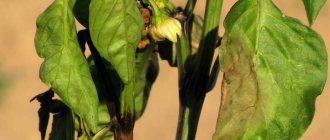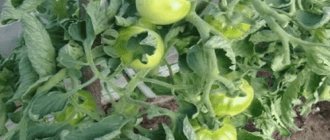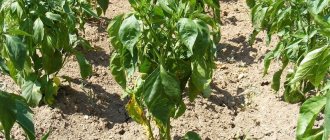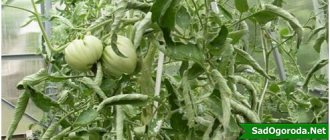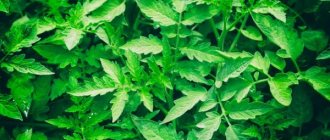Author: Elena N. https://floristics.info/ru/index.php?option=com_contact&view=contact&id=19 Category: Houseplants Published: May 31, 2012Republished: February 27, 2019Last edits: March 16, 2021
Why do indoor plants lose their leaves? This is one of the most common questions that amateur gardeners ask professional gardeners. In this article we decided to put together and explain the reasons for this phenomenon. If a houseplant suddenly drops its leaves, this is usually the result of stress experienced by the plant. Stress for indoor flowers is a sharp change in air temperature, cold drafts, a sudden change in the level of illumination when, after a shaded place, you suddenly move the pot with the plant to a sunny windowsill. From the stress experienced, the flower begins to shed leaves, and even buds.
Why do the leaves fall?
Author: Natalya February 27, 2022 Category: Indoor plants
Why do indoor plants lose their leaves? This is one of the most common questions that amateur gardeners ask professional gardeners. In this article we decided to put together and explain the reasons for this phenomenon.
If a houseplant suddenly drops its leaves, this is usually the result of stress experienced by the plant. Stress for indoor flowers is a sharp change in air temperature, cold drafts, a sudden change in the level of illumination when, after a shaded place, you suddenly move the pot with the plant to a sunny windowsill. From the stress experienced, the flower begins to shed leaves, and even buds.
Who should I contact if I couldn’t cure the plant myself?
It happens that all the conditions are met, there is enough water and the pests are defeated - but the flower still dies. The first place you can go for advice is specialized forums. There are also several popular groups on social networks - Flower Group or Flower Mania for indoor flowers and house plants, where amateur gardeners are always ready to help. On Instagram, you can ask for advice on the pages of flower bloggers - both Russian-speaking and foreign. For example, Max Turansky and Darryl Cheng live in a real apartment jungle.
If you want to deal with all the problems at once, you can turn to specialists. A few years ago they were invited to care for a large number of plants, for example in offices. And today you can call, even if you bought a couple of flowers for home and don’t know what to do with them next.
Most often I am asked to replant a plant or cure it. This usually takes 2-3 visits to the client. 90% of people overwater their flowers, so I try not only to help, but also to explain how to properly care for them.
Source
What to do if the leaves of indoor flowers fall off?
In woody houseplants, sudden leaf loss may be a consequence of prolonged drought.
If your indoor flower's leaves are falling off, analyze whether you are watering it correctly. In winter and autumn, for example, most indoor plants only need to be watered once or twice a month.
What should you do if the leaves curl and turn red before they fall?
Curling and reddening of the leaves may be a result of your flower being burned by direct sunlight. In this case, move it to the shade, renew the top layer of soil in the pot, and spray the diseased flower with epinol.
What should I do if the leaves fall off green, but some of them seem to be wrinkled?
Most likely, these symptoms indicate that your plant has suffered from dry air or improper watering - too often or, conversely, too infrequent. In this case, regular spraying with water and revising the watering schedule in accordance with agrotechnical requirements will help. It is advisable to remove bare shoots, but even better is to replant the plant in fresh soil with fertilizer.
What to do if the leaves curl into tubes and fall off?
These are clear signs that the plant is frozen. Check if there are any drafts in the room. Another possible reason is constant waterlogging of the soil.
What to do if the lower leaves fall off?
If the plant sheds its lower leaves, and the leaves fall dry, then the flower is probably unevenly illuminated and there is not enough light for it. In addition, the cause may be dry soil or air temperature that is too high for the plant, or insufficient humidity.
What to do if a recently purchased flower drops its leaves?
Very often, indoor flowers after transplantation or when moving (from a store to your home, or even from room to room) experience stress and, as a result, shed their leaves. Don't worry if a few leaves have fallen, but if the leaves have started to fall, take immediate action. The normal acclimatization period for the plant lasts no more than two weeks.
What to do if the leaves of tuberous and bulbous indoor plants fall off?
For bulbous and tuberous plants (tuberous begonia, indoor cala, hymenocallis, amaryllis), leaf fall is a natural phenomenon. After the leaves die, leave the plant in the same pot without replanting, limit watering and wait until the period of active growth begins. Achimenes and canna can be kept in moistened peat at this time, and before active growth begins, they can be moved to a pot with fresh soil.
In the winter, figs and indoor pomegranates can shed their leaves if the room is not light enough. Leave them in the pot, water less often, and new leaves will appear on the plants in the spring.
What to do if buds and flowers fall off?
Typically, indoor plants shed buds and flowers in poor lighting, lack of moisture, or when the soil is oversaturated with nitrogen. Certain types of pests and lack of nutrition can also deprive your plant of flowers and buds. Examine the flower for unwanted guests and feed it.
Improper care
Most often, plants turn yellow, become spotted and stop growing due to unsuitable conditions. For excellent health, a flower needs:
Lighting
To understand how much light a plant needs, find out what conditions it grows in in the wild. For example, succulents thrive on rocks under the scorching sun, so they need a lot of light in an apartment. All species with light and variegated leaves also love bright lighting. But dracaenas or spathiphyllum, on the contrary, prefer shaded places - they will be comfortable away from direct sunlight.
But even the most shade-tolerant plants will need additional lighting from November to March - during this period, daylight hours are reduced to several hours. For additional illumination, ordinary phytolamps are enough; they are sold in most hardware stores. They contain blue and red diodes - these are the most important parts of the visible spectrum for plants. Together they give the same purple color that can often be seen in windows. For a standard window sill 50x150 cm, three 15-watt light bulbs are enough.
Watering
The watering regime depends not only on natural needs, but also on the season. For example, in summer, succulents need to be watered once every 10-14 days, and ficus plants - once every 3-4 days. In winter, watering of all plants is reduced. Some, like hydrangeas or poinsettias, may even need a dormant period without any water at all.
To determine whether a plant needs water, loosen the soil 5 cm deep, using, for example, a wooden stick. If the soil is moist and dark, watering can be delayed. It is ideal for the soil to dry out by 2–3 cm.
Fertilizers
All plants, without exception, need additional nutrition. As a rule, you need to feed flowers and trees during the period of active growth - in spring and winter.
Plants bloom and grow from March to September. They need to be fed every week. You can alternate root feeding - watering, and foliar feeding - spraying.
Why do the leaves of indoor plants fall off?
Many problems with indoor plants are easier to prevent than to fix. And this rule especially applies to care: an individual approach to indoor pets, careful adherence to the regime of watering and fertilizing, control of the degree of drying of the substrate guarantees the plants preservation of both health and attractiveness. The loss of leaves by indoor plants, even if it is partial, is a problem after which the attractive appearance is not restored as quickly as we would like. Most often it is associated with improper watering, although in some cases other factors also cause this problem.
Related article: Why ficus benjamina leaves fall: watering, soil, air, disease
Leaves fall on a houseplant.
© Brian Ward Contents:
- Leaf loss from indoor plants varies
- The first thing to analyze is watering
- How to stop houseplants losing leaves
Leaf loss from indoor plants varies
Indoor plants dropping leaves is a common and serious problem. Along with dry tips, loss of color and spots on leaves, this has the greatest effect on the attractiveness of the plant. But unlike other problems, it can sometimes be solved quite simply, especially if you don’t hesitate. Of course, with significant baldness, the production of new leaves and the growth of the old crown sometimes requires a very long period. But the fight against this itself is not so difficult.
Most often, gardeners encounter this phenomenon during the winter. The discrepancy between typical room conditions and the parameters required by the plant, a sharp reduction in light, drafts, and the need to adjust the frequency of watering only increase the risk of leaf falling (as well as the appearance of any other problem). But you can encounter this phenomenon at other times of the year, even on plants that look like they are actively growing.
Typically, leaf fall is considered a one-type problem, but in fact it can be very different. Depending on the accompanying phenomena, the following varieties of this phenomenon are distinguished:
- rapid or massive loss of leaves without other changes;
- dropping lower leaves;
- leaves falling off after curling;
- falling leaves after yellowing;
- partial shedding of foliage in newly acquired plants.
Oddly enough, all these types of shedding are caused by different reasons and require different approaches to correcting care. Factors that cause leaf loss depend on the frequency of watering, the location, the age of the plant, and even the form of its growth.
Rapid leaf fall in indoor plants
The rapid shedding of foliage, including young leaves, and sudden exposure of the crown are typical only for deciduous shrubs and trees (figs, pomegranates, etc.) and are rare in indoor cultivation. The leaves of both tuberous and bulbous plants (amaryllis, gloxinia, begonia, zephyranthes, oxalis, etc.) fall off when entering the dormant stage, but this is rather an exception to the rule. If your plant suddenly sheds its leaves and does not belong to the listed categories, then there can be only one reason - the plant has experienced a strong traumatic factor, a sharp change in conditions. For such exposure it is necessary to really radically violate the rules of care. Factors that caused this decline may include:
- moving the shade-loving plant to direct sunlight;
- temperature difference of 10 degrees or more (in any direction);
- draft with icy or frosty wind;
- complete drying of the substrate in woody plants when installed in a hot place.
Trimming drying leaves on a houseplant. © Kathy Purdy
Indoor plant leaves falling off after folding
This type of abscission is caused by a systemic violation of conditions comfortable for the plant in the direction of an undesirable decrease in temperature and increase in humidity. He is called:
- using too much water, which stagnates in the substrate;
- a decrease in air temperature compared to the recommended one (not short-term);
- drafts for plants that are very afraid of them.
Falling leaves of indoor plants after yellowing
For indoor shrubs and fast-growing crops, gradual yellowing and loss of older leaves is natural, occurs as they grow, and is not considered a sign of serious health problems. But the massive yellowing of leaves, followed by the same massive dropping of them, indicates a serious lapse in care. The following factors cause this type of abscission:
- waterlogging of the soil for non-moisture-loving species;
- placement in a constant cold draft for sensitive plants.
Drying and falling of the lower leaves of indoor plants
This process is not natural. It is caused by insufficient conditions, as a result of which the plant is forced to get rid of the lowest leaves in order to preserve the rest. This phenomenon is caused by factors opposite to waterlogging and hypothermia:
- content in heat, in temperatures exceeding the recommended by more than 5 degrees;
- very poor lighting for light-loving plants;
- constant drying out of the soil in moisture-loving species.
Loss of leaves in newly purchased indoor plants
As a rule, partial fall of foliage in this case is always associated with a sharp change in conditions due to moving. The plants did not undergo gradual adaptation and perceived the lighting or temperatures as “shock” in the new place. If the shedding of leaves is not massive, then there is nothing terrible about it. Over time, the plant will recover and get used to it. But it is better to ask carefully when purchasing about the conditions in which the crops grew and provide at least an intermediate option with a soft transition so as not to lose a single leaf.
Caring for a houseplant that is losing its leaves. © Michelle Slatalla
The first thing to analyze is watering
In most cases, the dropping of leaves of a houseplant is associated with improper watering. And it is by analyzing what mistakes you might have made that you need to begin searching for both the source of the problem and its solution. Regardless of whether there are other factors that could have caused the leaf loss process, always consider this factor carefully.
Article on the topic: Medicinal lingonberry: beneficial properties and contraindications, properties of leaves, planting and care
Houseplants are watered not as conveniently, and especially not when they want, and not even at a certain “correct” interval, but as they need it. To find the correct schedule of procedures for each specific plant, you need to study the recommendations and draw up a table. You can attach tags or short notes to plants that are different from most (such as colored tags). Most indoor plants have similar requirements, and you can develop your own watering system without wasting extra time. But general guidelines do not replace an individual approach: before pouring water on the substrate, check how dry it is.
Perhaps, due to a combination of temperature and lighting at a particular time of year, the soil dried out more slowly or quickly, and accordingly the plant needed a different frequency of treatments. During the dormant period, the frequency of watering for all plants is adjusted in accordance with the rate of drying of the substrate and their need for the dormant stage. But even for flowering plants, watering is still reduced. Check the information for your specific plant and compare whether your watering meets its needs. Any deviations in any direction are a serious factor in leaf loss.
Other factors that can cause houseplants to drop leaves:
- incorrect wintering temperature;
- lack of lighting correction in winter;
- dry air;
- depleted soil;
- late or unnecessary plant replanting;
- replanting with soil replacement instead of transshipment;
- poor or excessive feeding;
- incorrect water characteristics;
- type of substrate that does not correspond to the type of plant;
- exposure to heating devices;
- the appearance of pests on the plant (including soil-borne ones);
- accumulation of dust on the leaves and dirt around the plant;
- lighting for plants that can only grow in natural light.
Watering a houseplant. © Julie Bawden-Davis
Preventive measures
In order to maintain the attractive appearance of a houseplant, it is necessary to take preventive measures in a timely manner. These include:
- Select the correct location for the pot. The plant should have enough light, but be protected from direct rays.
- Regularly monitor the room temperature; it is especially important to comply with this criterion in winter.
- For watering, use filtered or boiled water. Soft water promotes normal development and does not harm sensitive roots.
- When purchasing a substrate, you need to make sure that it is slightly acidified. In alkaline soils the plant will die.
- Every 4-5 days it is necessary to loosen the soil. Regular supply of oxygen to the soil protects against problems such as root rot.
- During the spraying period, it is necessary to ensure that drops of water do not fall on the inflorescences.
- During transplantation, the bush is taken out of an old pot with a lump of earth. This procedure protects the roots from damage.
- Use fertilizer regularly, especially during the flowering period. For azaleas, liquid complex fertilizers are used, which quickly dissolve and penetrate to the roots.
- During the flowering period, you should not move the pot to another place.
Proper care and preventive measures help keep azaleas healthy.
Also, prevention methods include regular inspection for the presence of pests. To prevent their appearance, you can treat the bushes with Aktara. However, it should be remembered that such treatment is carried out when there are no buds on the bushes.
If preventive measures do not help preserve the indoor flower, it is necessary to obtain a young bush using cuttings. This way the grower will preserve the variety.
How to stop houseplants losing leaves
The strategy for combating leaf fall directly depends on the cause of this phenomenon. Eliminate the unfavorable factor - and your plant will again delight you only with growing, and not falling leaves. So, in drafts, you need to rearrange the crop, if the lighting is too bright, you need to install screens, adjust the frequency of watering according to the rate at which the substrate dries out, change the room if the temperature is incorrect, etc.
If the loss of houseplant leaves is caused by pests or diseases, the strategy is completely different.:
- the plant must be immediately isolated from the rest of the collection;
- if possible (if the leaves are not pubescent and we are talking about pests), carry out mechanical treatment - washing with soapy water, showering;
- treat the plant with biological products;
- if the problem is advanced, use insecticides or fungicides, the action of which is aimed at specific pests or fungi, and if affected by soil pests, carry out an emergency transplant.
Why the leaves of indoor plants turn yellow: causes and methods of control
When growing indoor plants, every gardener hopes for the health of the plantings and believes that the effort and time spent will result in abundant and luxurious flowering of indoor plants, rapid growth and diversity of green plants. No gardener wishes sickness to his wards. But sometimes it happens that the leaves of indoor plants begin to turn yellow. At first, the gardener is confused and scared, but do not worry: every yellow leaf has its own reason, and knowing the possible causes of yellowing leaves will help you be more confident and prevent this problem from spreading in your home garden.
Pests
If you have figured out the care, but the ficus or violet continues to lose leaves, you can start looking for pests. You can understand who exactly came to have lunch with you not only by the appearance of the insect, but also by the marks on the leaves and stems of plants. Here is a list of the most popular household pests.
Shchitovka
These insects are easy to recognize: their body looks like a small brown tubercle. Scale insects settle on leaves and lay eggs. Yellow or red spots appear at the site of “settlements”. After some time, the plant begins to dry out, and if the scale insects are not removed in time, it may even die.
Causes of yellowing leaves
Indoor flowers and plants for a gardener, like pets for a breeder, are a lot of investment, effort and time, and besides, they are the gardener’s pride, an indicator of his knowledge and skills. Yellowing of the leaves of indoor plants causes frustration and disappointment, especially if everything was fine until that moment, and then suddenly changed. Meanwhile, there are not so many reasons for yellowing of leaves, and they are all divided into four functional groups:
- violation of the conditions for keeping indoor plants;
- violations of the care of indoor plants;
- damage to a houseplant by a disease;
- attack on a houseplant by pests.
Let's take a closer look at each of these groups and find out what to do to prevent this problem from affecting our plants.
Violation of the conditions for keeping indoor plants
The concept of plant agricultural technology includes a set of rules for caring for indoor plants. Among these rules, the conditions for growing a houseplant are always clearly stated. Violation of these conditions leads to the expected problems: the leaves turn yellow, dry out, and the flower begins to hurt. I recommend studying violations in the maintenance of indoor plants that cause yellow leaves.
- Lack of lighting.
Examine the plant carefully. A lack of lighting is characterized not so much by yellowing of the leaves, but by their loss of color, acquired pallor, and the shoots stretching upward in search of a light source. In this case, move the pot with the indoor plant to the south windowsill. - Direct sunlight.
Contrary to the belief that all flowers love the sun, it is important to know that most plants require shading. Direct rays cause sunburn of leaves; in this case, yellow spots will be located only on the window side. The solution is the same: change the location or hang a thin curtain on the window.
Related article: Brussels sprouts from seeds, planting and care in open ground
- Draft in the room.
Unlike garden plants, indoor flowers are not adapted to wind and air movement. It’s easy to check the reason: if the leaves turn yellow on a plant standing under an air conditioner or near an open window, look for a new place for the flower. - Temperature difference.
Like a draft, a sudden change in temperature, a jump in degrees in one direction or the other, can cause leaves to turn yellow. The problem can be fixed, but it will take time and patience: leave the plant alone and protect it from temperature fluctuations. - Cold surface.
This often happens in winter, when a flower stands on a windowsill, heated by a radiator, and its leaves touch the icy window. The situation is dangerous because it is impossible to restore overcooled leaves; they die and rot. Remove diseased leaves and move the pot away from the window.
- Wrong pot size.
If the pot is large, moisture stagnation forms in the free space of the soil, causing rotting of the leaves of the indoor plant. If the pot is small, the flower will not have enough nutrients. Choose the right pot for your indoor plant. For the same reason, the leaves of a plant in a pot without drainage holes turn yellow. - Mistakes in choosing soil for indoor plants.
Using a universal soil for all types of plants is fundamentally wrong. Each plant requires its own qualitative and quantitative soil composition. Follow the recommendations for growing a particular plant. - Low air humidity.
This problem is typical for tropical plants that are accustomed to high humidity. Buy a humidifier or place the pot on damp expanded clay or moss.
Problems with caring for indoor plants
Now let's turn to violations in the care of indoor plants.
- Incorrect frequency and volume of watering a houseplant.
Excessive watering provokes stagnation of moisture, which causes rotting of the root system of the indoor plant. Lack of watering dries out the roots, cutting off the supply of food to the plant. In the first case, you will need to replant the indoor plant and remove the affected roots; in the second, you will need to increase the frequency of watering. - Incorrect watering.
Irrigation problems are a broad topic; yellowing of leaves can result from using the wrong water. If watering is carried out with hard tap water, the yellow leaves will also begin to dry out. Let the water settle before watering the flower.
- No transfers.
The plant may be cramped in the pot, or the soil may have become so poor that it affects the color of the leaves of the indoor plant. Replant the flower in new soil and pot. - Malnutrition of a houseplant.
A lack of mineral fertilizers is easy to recognize: if you do not feed the plant, there is not enough nutrition. An overabundance of fertilizers is even more dangerous, since the resulting chemical burns to the roots are not restored. In the first situation, increase the feeding; in the second, stop completely and wait until the plant comes to its senses.
Infection of a houseplant with a disease
Among the diseases of indoor plants, there are also several causes of yellowing leaves.
- Fungal infection of a houseplant.
Fungal diseases that cause yellowing of foliage are physaria, late blight and anthracnose. The advantage of a fungal disease is that it is not resistant to treatment. Plants affected by fungal diseases must be treated with fungicide solutions, and after some time repeat the treatment, following the instructions on the package. - Viral infection of a houseplant.
In this case the situation is more sad. There are no cures for viral diseases; the affected parts of the plant must be removed and taken outside the apartment. Treat the remaining parts of the plant and all neighboring plantings with an antiviral prophylactic agent in the dosage specified in the instructions.
Pest attack on a houseplant
And the final group of reasons for yellowing of leaves is associated with the appearance of insect pests on plants. The yellowness of the leaves due to insects is due to the fact that insects feed on the juices of the plant, which is why the flowers lose their richness of color. Insects that love to feast on plant sap include spider mites, aphids, whiteflies and thrips. Ways to combat yellowing leaves obviously involve driving pests out of the pot. There are two methods for this: chemical and physical. Treating indoor plants with insecticides will protect the flowers from re-invasion, but it is important to understand that chemicals are not recommended for use in a residential area. The physical method is to collect insects from the plant by hand, and regularly wash the leaves with a solution of laundry soap, the aroma of which prevents many insect attacks.
Pro for any task
Fighting scale insects is a rather labor-intensive process. The plant must be cleared of insects and then sprayed with insecticide. For example, “Bankolom”, “Inta-Virom” or “Aktaroy”. Before using the drug, carefully read the instructions - the insecticide may be dangerous for people or pets.
You may also have to treat the “neighbors” on the windowsill - the scale insect moves quickly.
Mealybug
A close relative of the scale insect, which looks like a ball of cotton wool. The scale insect leaves sticky secretions on the plant, slows down its growth and bends the stem. Ficuses, dracaenas and succulents are at particular risk.
To get rid of the pest, wipe the leaves with a soap-alcohol solution or dishwashing detergent diluted in water. After this, carry out chemical treatment. Insecticides such as Fitoverm, Actellik, Inta-Vir or Fufanon are suitable.
One of the most dangerous pests for young plants. Aphids devour the upper shoots or the lower part of the leaf - as a result, they turn yellow and die.
A soap solution will also help fight aphids: you not only need to wipe the leaves with it, but also spray it. You can also plant repellent plants nearby, such as mint, fennel or basil.
Thrips
One of the most “secretive” pests. They are difficult to detect due to their small size and inactive behavior. At the site of their bites, light yellow spots or streaks form - later they can turn into holes.
Thrips are most dangerous for violets and orchids. If insects or their traces are found, you need to wash the flowers under a warm shower and then treat them with insecticides - “Aktellik” or “Fitoverm”.
Spider mite
Another representative of tiny pests. It bites through the surface of a leaf or stem, after which infection easily enters the plant. Tick marks are not easy to spot. Only in very advanced cases can a thin cobweb be found on the leaves.


